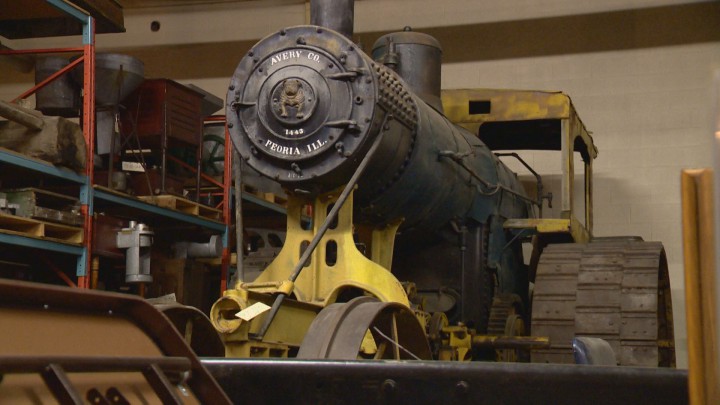SASKATOON – Behind the scenes of Boomtown is the Western Development Museum’s best kept secret. A Curatorial Centre, more than 100,000 square feet in size, houses thousands upon thousands of artifacts that are not on display at any of the WDM’s four museums.

“We have 80,000 approximately in the collection and at least half of those are on display,” said Joan Champ, CEO for the Western Development Museum.
The items are acquired the majority of time through donation and must be approved by a committee based criteria.
“How does it relate to Saskatchewan? Does it have a story? Does the WDM already have a similar artifact in its collection?” Those are just some of the questions the acquisition committee asks before accepting an item.
If given the green light, each item is then assigned a number so it can be tracked along its journey.
“We need to know where to find things when we need to,” said Champ.
Read more: WDM exhibit ‘uncorks’ 200 year old argument about alcohol
Row after row of rich, Saskatchewan history lines the shelves at centre. An eye spy game that could go on for days and days with a collection of items from every decade, some dating back as early as pre-1905.
“I’ve been in this position for just about a year now and I still come back into the storage area and I see new things,” said Melissa Stus.
Her job is to work with families and to coordinate the arrival of new artifacts.
“It’s a very interesting place that gets your mind going and imagination rolling.”
She along with other staff are ten steps ahead and always thinking of the next display, even if the artifacts won’t be exhibited for decades.
This past summer, items were gathered during the largest evacuation in the province’s history after wildfires in northern Saskatchewan burned out of control.
“We acquired things like a Red Cross volunteer vest, a teddy bear and even a can of the Labatt drinking water that was provided to the evacuees,” added Stus.
A series of steps is involved in helping to orchestrate the end result, a magical experience for visitors of the museum. One that may not even be possible if it wasn’t for Mark Anderson, WDM conservation technician.
“I work in conservation so that’s working on the preservation of objects, not really restoration so I just try to preserve it for the future generally as found when it came to the museum not what it looked like when it was brand new.”
Each artifact comes with a unique set of challenges since each item is made from different materials requiring different conservation requirements.
“The best thing for an object is to put it in a box to preserve it so the more controlled the environment the better it is.”
Since that can’t be the case especially for some of the bigger items in the collection, the facility is heavily monitored for fire and water hazards, light sources, fluctuations in heat and humidity and precautions are in place to prevent pests.
That aside, Anderson says the preservation process can take anywhere from five minutes for smaller artifacts up to endless hours for bigger items in order to make sure the item lasts long into the future for generations to come.
Care and attention is paid to each heirloom, no matter the size, since each and every item has a story behind it.





Comments